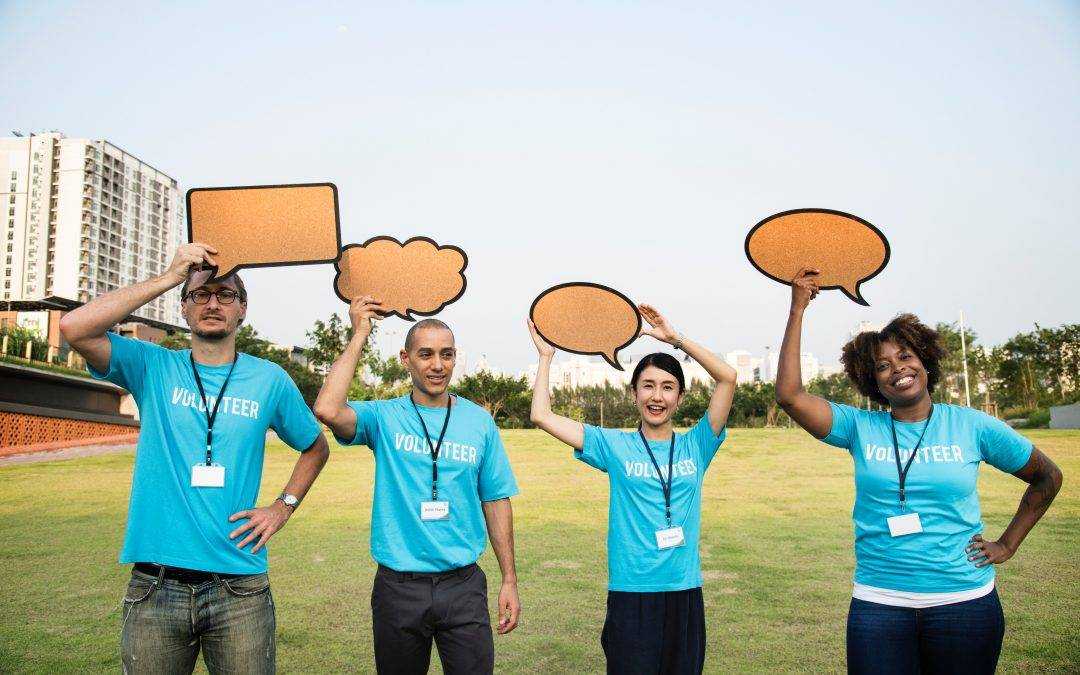
by niallmccrae4994 | Oct 9, 2018 | Coffee
The Oxford English dictionary definition of the word communication is as follows. “The imparting and exchanging of information by speaking, writing, or using some other form of the medium”.
It doesn’t sound like it should be a hard thing to do, so why is it so hard for some people to do this?
As an example! An inbound business enquiry came into the office. The potential customer found us via a recommendation, good news so far! They ask all the right questions and understood what it is that we do at Hessian Coffee. Also they understand how we could support their business and arranged a meeting within 48 hours of the call. Another piece of positivity! This is going great. Diary re-arranged, meeting planned, preparation done as scheduled to taste 3 different coffees. Time was allocated to re-iterate the conversation we had on the phone allowing us to bond face to face ensuring all their needs are discussed and met. All good and positive wouldn’t you say!
The Big Day Arrives
Big day arrives. Introductions, the coffee tasting goes well, we share knowledge of what we know and what they expect. I ran through the equipment Hessian Coffee can offer, including how we have free barista training for our customers. I also explained our range of freshly roasted espresso beans and filter coffee. We discussed how we do more than coffee with syrups, takeaway cups, award winning teas. Also I let them know we offer next day delivery, 30-day credit, competitive pricing. This is all good once again, so I leave the meeting feeling positive on the all-round good day being had.
As I was leaving I mentioned to the prospective customer I would follow up that afternoon with an email outlining the meeting and the meeting notes. Hessian would commit to what we can do and how we can move forwards. I put a trace on the email to ensure it goes to the correct person and that it is received. Pretty damn good first impressions in my book I feel.
It all goes wrong
Now this is where it goes wrong. A couple of days later not having heard anything, I re-send the email (which I know was received). Once again with a trace on, and once again picked up. Naturally we are all busy people and guess they had forgotten to reply initially, these things happen.
Leaving it a couple of days and still nothing I give them a call on the mobile. Guess what happens, sent straight to voicemail so I leave a positive message. Giving it what I consider appropriate time I give it a couple of days and try again. Once again sent to voicemail.
Where I struggle is at what point do you give up and put it down to arrogance? Surely basic politeness is not hard and its one of the only things in life that is free.
You win some
You win some and you lose some. I understand that and that is not the problem. If you can understand why you have won or lost then this helps us as a business and as an individual to grow, I get it.
The thing I don’t get is the whole lack of communication thing. Surely a one line email, text or heaven forbid returning the phone calls and saying sorry I am not interested at the moment. Or sorry I didn’t like your shoes, I would be content with anything!
So to finish up, I bring you back to the above dictionary definition because I assume that the “or using some other form of the medium” is NOT referring to telepathy!
I will end this by saying; “Let’s not be afraid to communicate”.

by niallmccrae4994 | Oct 9, 2018 | Coffee
NOT JUST ANY BOX! Take a look at our new Hessian Box. Our new espresso boxes, which we are very excited about if you couldn’t tell, are not your usual plain brown boring box. These boxes have been thought about, designed, re-thought about and produced. Then re-designed and re-produced until we were happy to deliver our product out to our customers in them. We decided a box should not be dull, it should reflect the journey it’s taken along the way. Also it should give an insight into what it holds! We think it should also educate and inspire. Lets make it add value, brand loyalty and educate at the same time. After all these are the core values we strive towards at Hessian Coffee and our boxes now reflect this.
What’s inside the box!
Our freshly roasted espresso beans are what’s inside the box. These could include our Espresso Number 1, Espresso Reserve, XTC Blend, House Blend and our Great Taste Award Winning Bourbon Select. Hessian will be delivering all these coffees in our 6 kilo boxes detailing the coffees journey from seed right through to cup.
The coffee Journey
This coffee journey is a long one. It all starts from the planting then moves to the harvesting, this can take up to 4 years! The beans as we know them are initially the seeds from the coffee plant which are nurtured as seedlings. They are watered often and kept shaded from direct sunlight. Once planted and in time, these become the newly grown coffee trees which bear the fruit, commonly known as the cherry, and are ready for harvesting.
This harvesting (picking) is generally done by hand making it very labour intensive. For our Arabica coffees, these are picked at altitudes above 4 thousand feet (this is Ben Nevis FYI). Once the beans are harvested these then go through a process to remove the seed from the plant either by drying in the sun, or by rinsing constantly in water. Depending on the method a different taste profile is produced. The seeds need to be dried once again, either on huge patio beds whilst being constantly turned over in the sunshine, or by large tumble dryers.
Our little seeds then have a further process called Milling to remove the outer skin or “parchment”. They are then polished ready for grading, sorting and filling into Hessian (Jute) sacks ready for shipping.
It’s a long Journey
After the long journey across the seas, the seeds are blended and roasted to our specifications. Next they are tasted and inspected for consistency and quality. Then they are packaged locking in the freshness and the last 4 years efforts. Finally they get delivered direct to our favourite customers doors.
We cannot control a lot of the journey until this stage. Maintaining fresh coffee is key. Also using and maintaining the correct espresso equipment is fundamental. The water needs to be of great quality. Grinding our coffee is as important as that first planting of the seed and if not, a correct extraction we will ruin the last 1460 days of its journey. At Hessian we recommend staff training by a professional is critical. This ensures great coffee is made simple whether it’s an espresso, cappuccino, flat white, latte or americana. If you do this then your customers will return time and time again. Great Coffee made simply!
A box doesn’t just need to be a box but a story and a journey of excitement. Something to give that feeling of opening a present on Christmas day from someone that cares.

by niallmccrae4994 | Oct 9, 2018 | Coffee
The only difference is a sprinkle of sugary chocolate dust?
So, its Friday, yippee! You decide to head in to town to pick up the random items not possible to get in the weekly shopping. While in town you decide to treat yourself to a large shot of hot caffeine, but which one?
- Cappuccino is in theory ⅓ of espresso coffee, ⅓ milk and ⅓ froth, usually with some chocolate sprinkles or powder on top.
- Lattes arrived later to our shores, at least I think they did and are milkier!
Back when I was working for peanuts, in hotels and restaurants, it was Cappuccino’s all the way. Nobody outside Italy, knew what a Latte was! This normally involved splashing, steaming, screaming, hot milk about in a big, old milk caked jug and hoping that you would muster something resembling foam. You then would spoon onto a cup of steaming black stuff made several hours earlier.
What is a Latte?
So, a Latte, often served in a tall glass, precariously on a saucer that doesn’t fit the base with a long spoon. What’s that all about? Also with a single or double espresso shot. Depending on what you have ordered or the premises you have visited. The milk should be silky smooth with a little foam on the top, which if lucky, your Barista (get me) may have created something artistic on top for you to gaze at.
The Cappuccino
So, to conclude! Cappuccino should taste a little stronger as there is less milk and more air, and probably less calories if you forgo the chocolate on top. Latte is a milky coffee, it will be a longer drink as there is more milk and less aeration. You will possibly get a mixture of the two as the cafe are making lattes and cappuccinos at the same time. The only discernible difference will be that whoosh of hot chocolate on the top and the type of cup or glass that they have served it in.
After queueing for more than 5 mins, drooling over the lemon drizzle cake and chocolate tiffin tray bake. At the same time you are justifying why you should or shouldn’t treat yourself. Then reluctantly realising there is a very real chance that you are going to get a parking ticket. So you opt for a takeaway. A takeaway then will leave you completely clueless what you have been served until it’s finished. This is the time when you take the lid off to get the best bits of the ‘Capsulate’ chocolate foam entrails. Don’t forget this requires you sticking in your middle finger around the edges of the cup to rescue the good bits. In the process you get it all over your hand and down your chin in the process, or is that only me?
Roll on wine o’clock when there are no such complicated decisions to be made.

by niallmccrae4994 | Oct 9, 2018 | Coffee, Great Taste Award
How is your coffee roasted? This is often a question asked either by customers, prospective customers, or competitors. I would like to say it is lovingly roasted by 2 guys in a shed with tattoos, handlebar moustaches, skinny jeans, no socks with impeccable sensory awareness. Men with pallets as smooth as silk and hand packed by ninja’s! But this is not the case and nor is this the case for the majority of coffee roasted in the UK.
Most coffee we drink in the UK has been commercially roasted and packaged (still lovingly) in a factory somewhere. At Hessian Coffee we are extremely proud of the fact we use a commercial roaster and don’t feel the need to pretend we are something other.
The roasting process
The roasting process is something that needs your undivided attention. Attention that is required throughout the entire process to ensure this perfect consistency. I am a big believer in letting those that know what they are doing get on with it.
So it begins with the green coffee beans (the coffee plant seed) arriving in large Hessian coffee sacks. They come from whichever part of the world it is grown (always between the tropics of Cancer and Capricorn). As seeds, the green coffee will not deteriorate and it is the process of roasting that unlocks the flavour and aroma from the cells. This gives us coffee beans as we know them. Before these little green beans can enter the oven, they are always quality checked for defects or any foreign bodies that may have entered the sacks during harvest or transportation. Next, small batch samples are roasted and cupped to ensure they meet our quality requirement.
Coffee roasting takes time
Roasting takes around 15 minutes at temperatures of between 200 – 230 degrees C. During this time the beans will expand and “crack”. This cracking is fundamental in the process as it allows the aroma and flavours to develop. If the beans pass the point of no-return which is after a second crack the beans will be ruined. This is one of the reason we use an expert for their years of experience, quality controls and state of the art roasting technology.
Once roasted to our recipe they are cooled. Cooling is critical as you don’t want to continue cooking the beans. Lighter roast coffees generally have more acidity and tend to be dry. Whereas darker roasts develop oils on the surface and offer a bitter taste. Caffeine levels also decrease the darker the coffee is roasted.
It’s about the balance
Getting that balance correct 100% of the time is the key to our blends. One of which is a great taste award winner. Transported through tubes like something out of Willy Wonker and the Chocolate Factory our beans are whizzed to packaging. Here they are cleverly weighed to ensure each branded kilo bag has a kilo of wonderful coffee in it. Next they get thermally sealed with a valve to ensure any additional de-gassing can take place. Lastly they are lovingly hand packed in our bespoke boxes ready for shipping.
Our Coffee beans in either single origin, arabica blends or mixed blend, are roasted specifically for the Hessian Coffee brand. By using the finest grade green coffee every time and it is our policy to trade in an ethical, environmental and socially responsible manner.
It’s a real art and science to consistently deliver quality freshly roasted coffee. So as mentioned we are delighted to leave it with the pro’s, allowing me and the other guys to get on with what they are good at!

by niallmccrae4994 | Oct 9, 2018 | Coffee
Why do we have numbers ranging in the supermarkets from 1 to 5? Some have dots increasing in a neat line or different shades of colour to identify what strength a bag of coffee is?
Surely strength is made up from the how much coffee is dissolved in the liquid? Take for example a nice gin and tonic. If you have a shot of gin in a pint of tonic it is going to be weak! Now lets take a shot of tonic and a pint of gin, strong eh! Every diluted beverage is the same whether it’s a cup of freshly brewed loose leaf tea. A refreshing orange squash or a pint of shandy. It’s all about the ratio to get the correct balance for the perfect drink.
Producing coffee (espresso or filter) does not allow all of the coffee bean to be dissolved into the liquid. In fact, only around 30% of the bean gets dissolved. Generally, this leaves wet soggy coffee grounds behind when the liquid is removed. Now within this 30% that is dissolved, only around 20% approximately is what we want to go into the cup. This is your caffeine strength.
It’s about the Brew
No matter how you brew the coffee. No matter how much liquid you use you can only ever get the same amount of extracted caffeine from the coffee beans. That’s just life and chemistry, no magic involved.
We can however control some of the other elements to get the best flavour. Water to coffee ratio as mentioned earlier with my G&T analogy. Use excellent quality water and filtered where possible. The time the grounds sit in the water. The correct water temperature and even down to the correct grind size for the chosen brew. Espresso, cafeteria, V60, chemed, or a pour over for example all should have different particle sizes. All these variables will have an impact on the extraction being either weak or strong.
Country of Origin
The wonderful taste coffee gives us is dependent on the country of origin. Processes used in the harvesting. Blending by the expert roasters and the physical process of the bean roasting. Flavour and aroma is brought out during roasting. Because of this, it is a rule that the darker the roast the more pronounced the bitterness will be. The darker the roast the least acidity in the final drink product.
So to summarise. A dark roast or a light roast has the same amount of caffeine extracted from the beans. So when our supermarkets are mentioning strength, I feel this mostly references the roast profile i.e. a mild, a medium or a dark roast. The coffee descriptors will give you what you see in the cup.
Growing areas
As a guide to growing areas, South America’s (Costa Rica, Guatemala, Honduras, El Salvador and Nicaragua) are said to have a clean and bright taste. Natural acidity, well-balanced and with a mild to medium body.
Colombia, Brazil, Ecuador and Bolivia make up much of coffee growing countries in South America. They offer a very mild-body. Whilst still being a light, clean cup, these coffees are also a bit creamier, often with a slight chocolaty after-taste.
Brazilian coffee varies in profile from spicy and rich to mild and fruity. Great for a filter coffee!
The Africans are more complex & bold. Generally a sweet, fruity and floral coffee taste. With the most popular roasts coming from Tanzania, Ethiopia, Kenya, Uganda, Rwanda and Burundi.
Asia beans are more earthy, and with a fuller body.
Ultimately, it’s a personal choice. Just like having a shot of tonic in a pint of gin. Strength guides on supermarket packaging can in my opinion be a bit misleading.

by niallmccrae4994 | Oct 8, 2018 | Coffee
There is something about having a nice tiny display. Either to be given a tin as a gift or selecting a tin when out buying a product. Tins feel right, ooze quality and seep of something gourmet. Even an empty tin has the potential to either tell a story of its past journey or awake the opportunity for something in the future.
Twisting that lid off to reveal the initial inner lid is a delight. This could be breaking the seal on a tube of Pringles. Plunging a knife into a Nutella jar to release the power of chocolate. Or what about that wonderful coffee aroma that hits you smack in the face as you lift the tin towards your nose. With a huge inhale allow the flavour and character to fill your head – boom!
The power of your senses
The smell of something can sometimes be better than how it tastes. Not in this case I can assure you, and it tastes as good as it smells. Especially as its one of your own coffees so we know how good it is.
Our wonderful and growing customers have been asking us to provide them with something they can offer to their customers. They want them to be able to enjoy the coffee experience at home.
Not being content with the usual packets, foils, pouches and zip-locks. In desperation I opted for a night cap as I pondered what would work for us and our customers. This pondering was in the form of Whisky and as I ransacked the drinks cupboard I came across a tin containing my inspiration. The tin was a bottle of Royal Lochnagar 12-year-old single malt whisky. After a couple of wee drams, a daft drawing of a screw lid and ring pull the Hessian tin was conceived. A dark tin with a screw down lid and an initial ring pull to allow the freshly roasted coffee to be at its best until opened. Then those wonderful flavours and aromas could be released.
Coffee tins
Having 5 popular coffee brands under our umbrella we selected just 2 to launch into tins initially for our customers and for the retail sector. Our Bourbon Select is 100% Arabica. Produced 1400m above sea level at the Monte Sion farm in El Salvador. Fully washed pure Bourbon varietal and harvested only for a brief period between December and February. The washed process allows natural sweetness and floral notes to develop. Once roasted gives wonderful complex flavour with notes of caramel, chocolate, almond citrus fruit. Not just all this, its Rainforest Alliance Certified and picked up Great Taste Award at the end of 2017.
To complement the Bourbon Select we have selected Espresso No 1. Once again, a 100% Arabica blend with equal components from Brazil, Honduras, and the African Congo. A fruit and nut taste with notes of citrus flavours. Not too bitter, not too acidic, smooth flavours and medium / medium dark body. Great for people just getting started on their relationship with coffee. Grown at altitude by small holdings, the addition of the Honduras blends the flavour and balances acidity for an all-round profile.
Both the brands are packaged in 250g Tins and available as either wholebean or as pre-ground for Cafetiere / filter use.
Delighted we were to offer these and chuffed they are on the shelves within Bishops Stortford Eat17 Spa’s as well as in coffee shops and cafés nationally.






